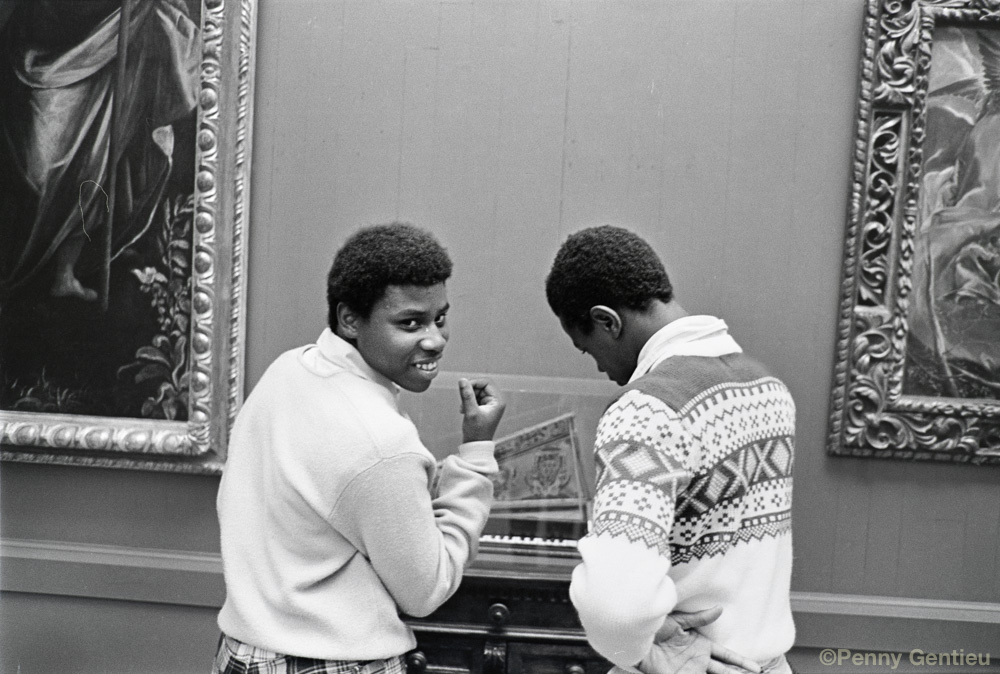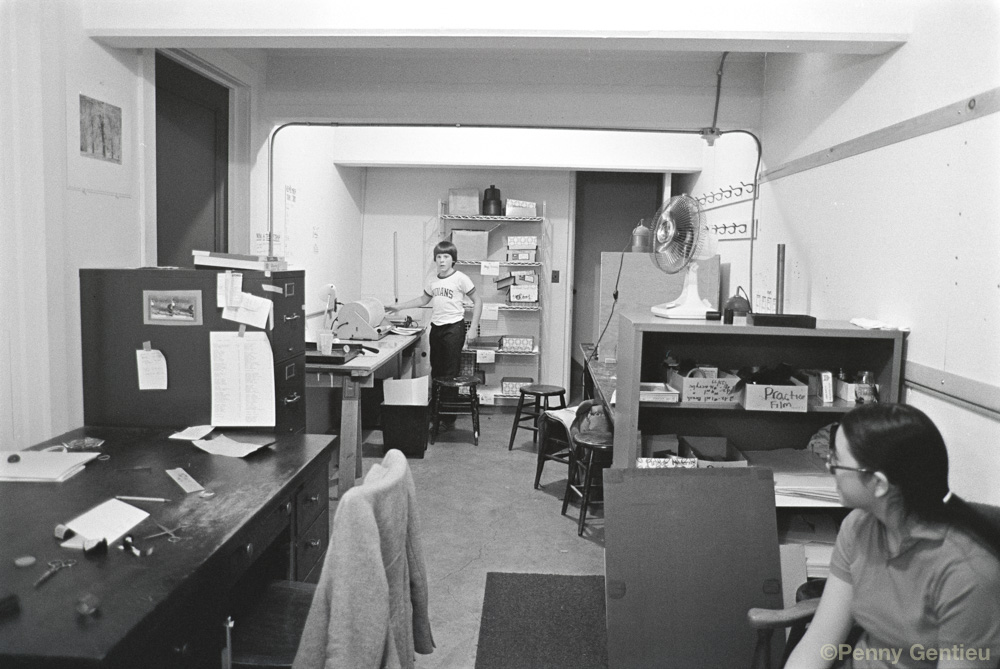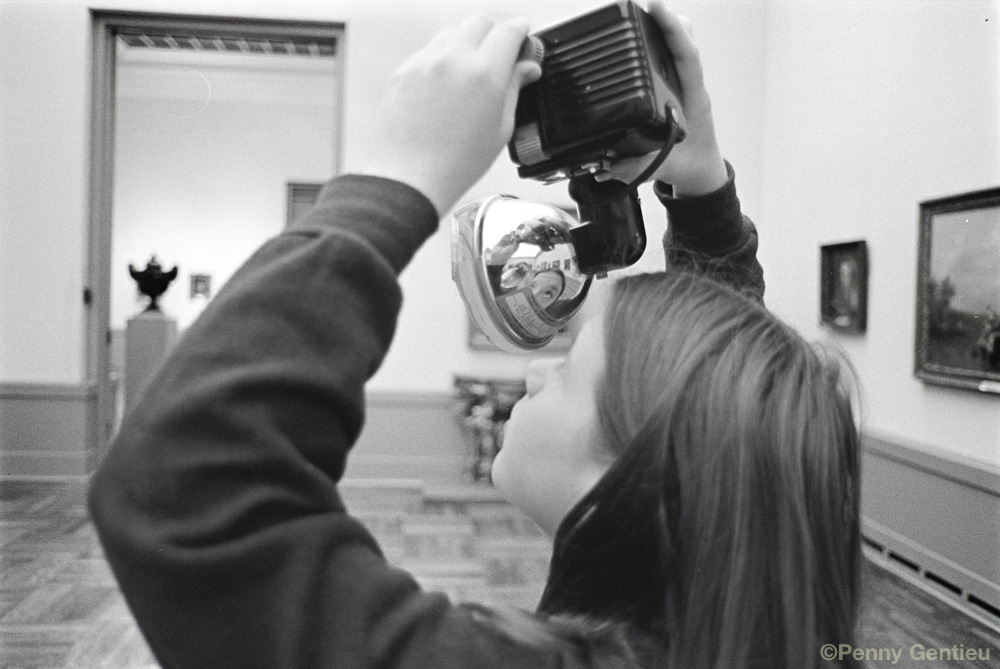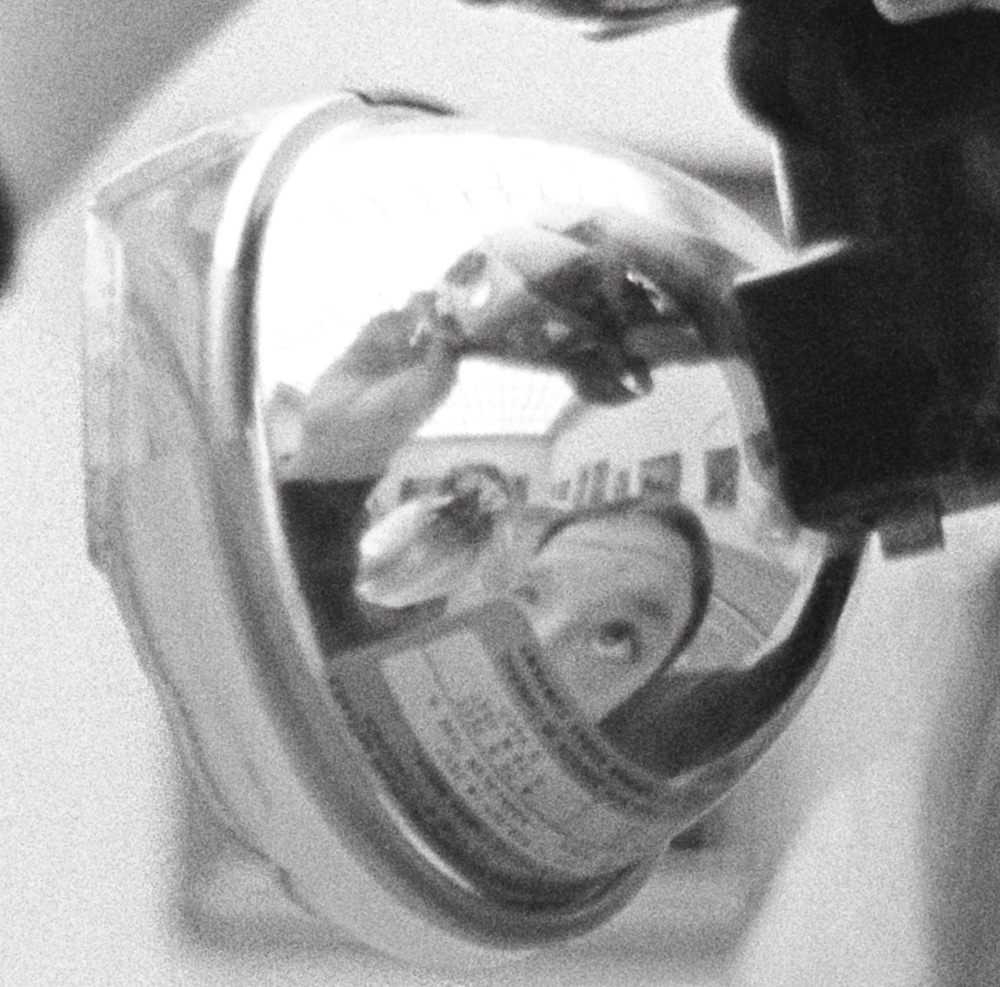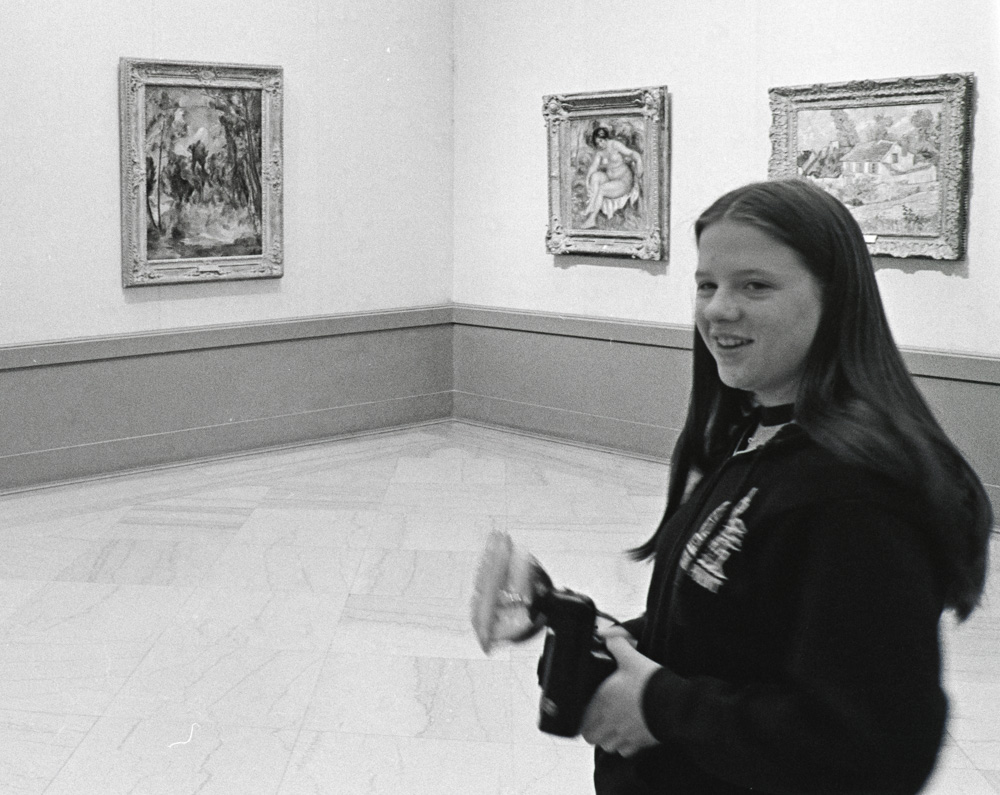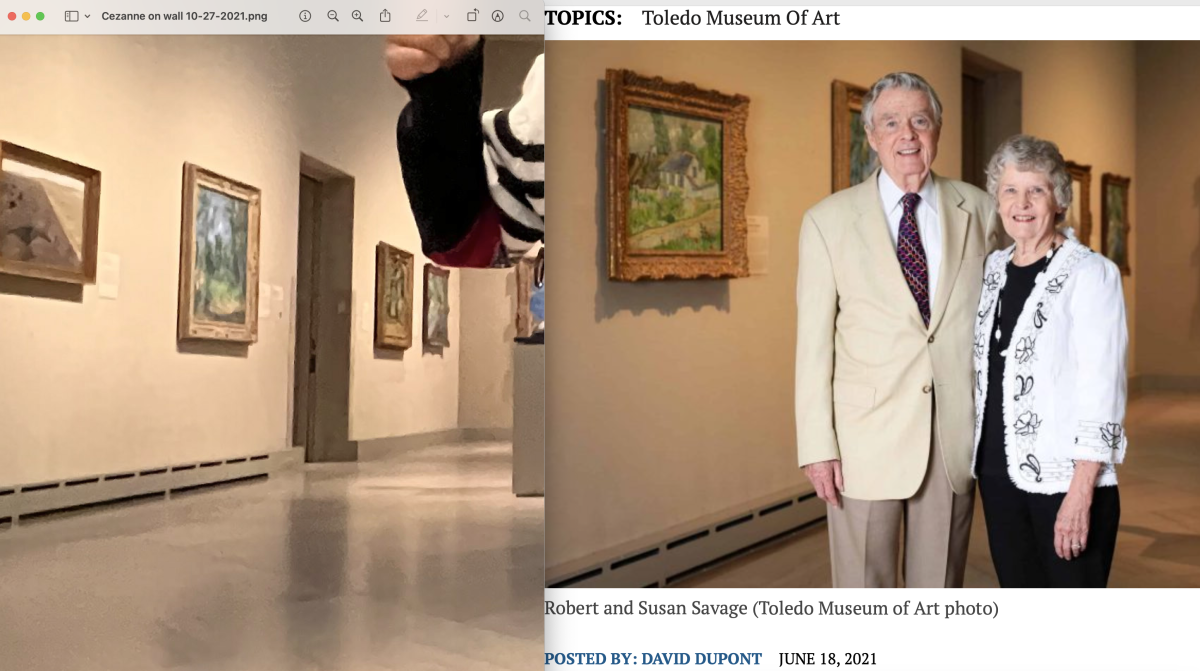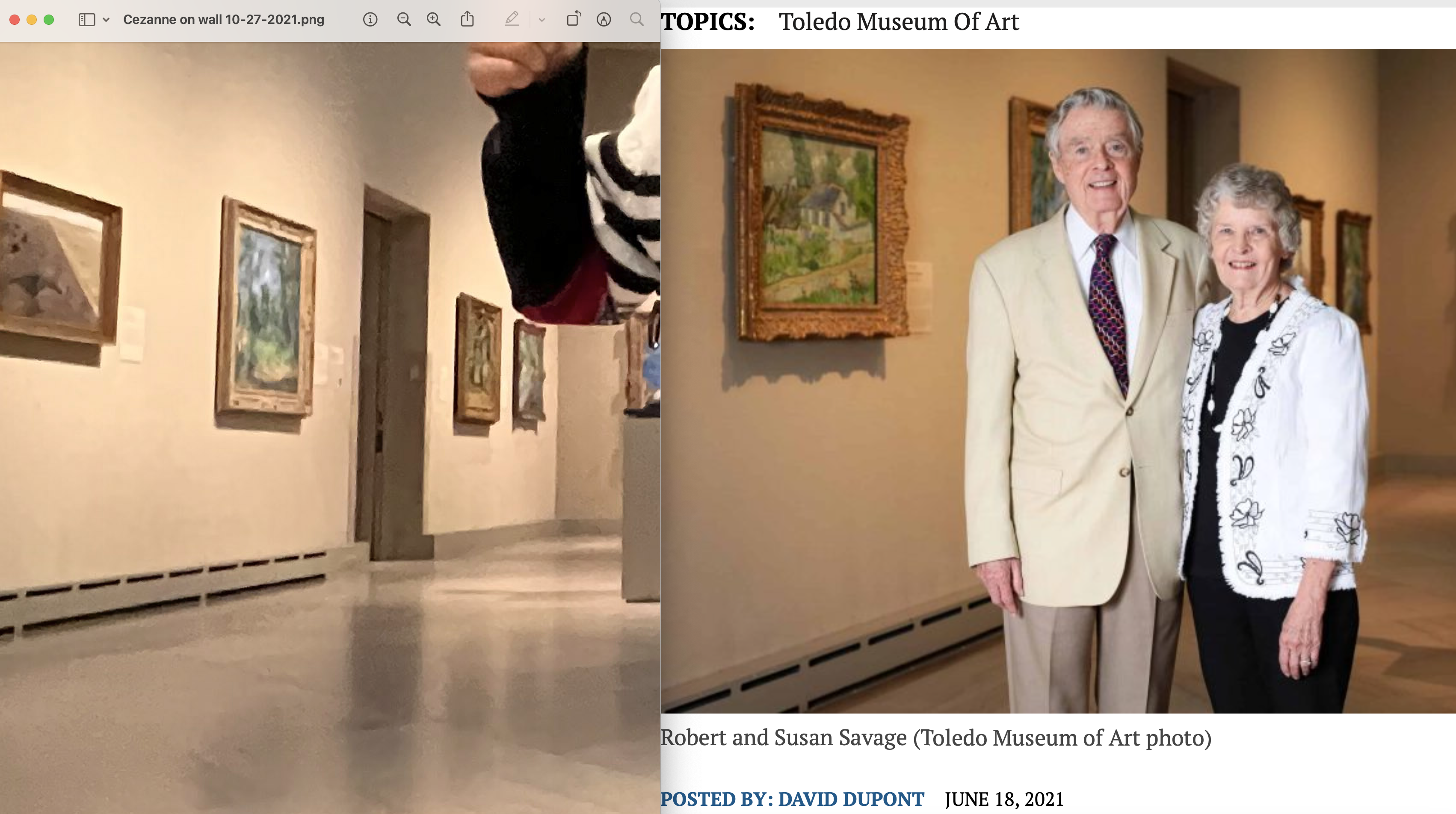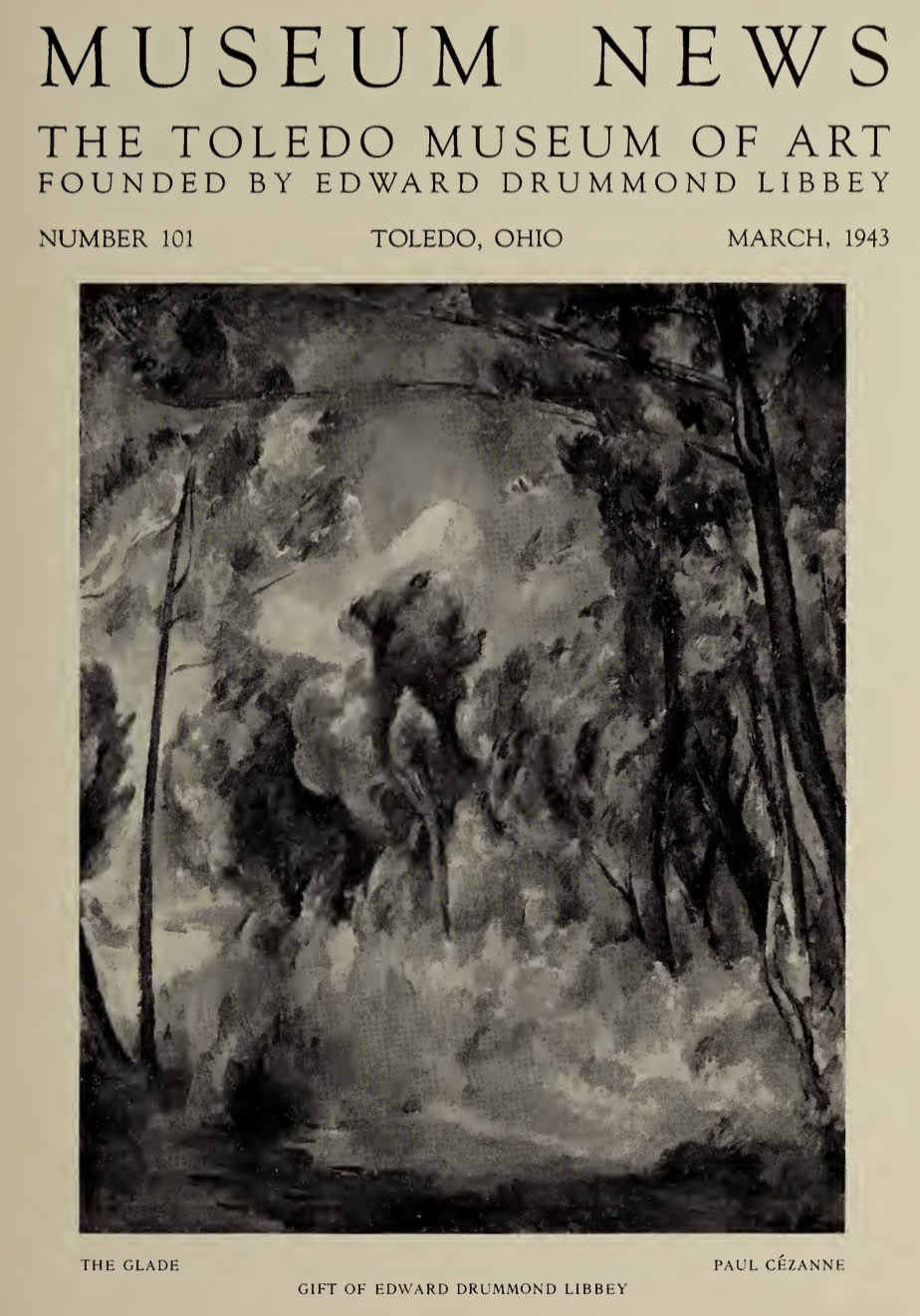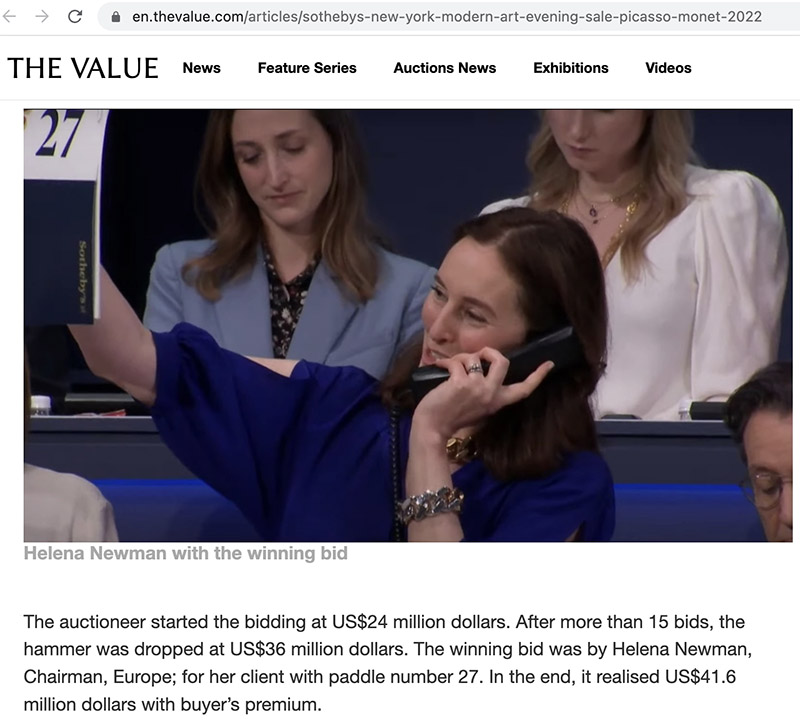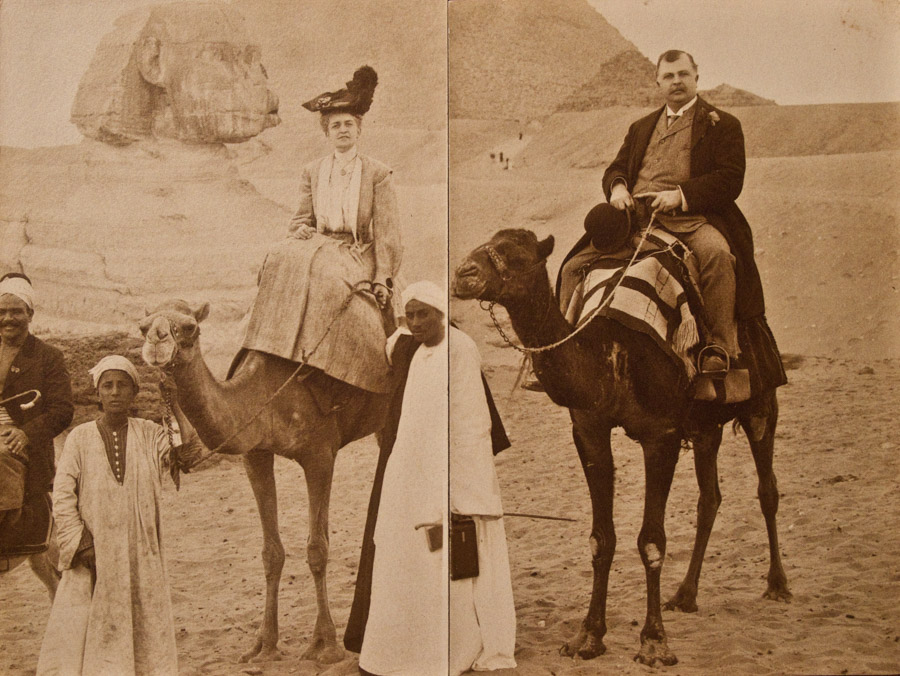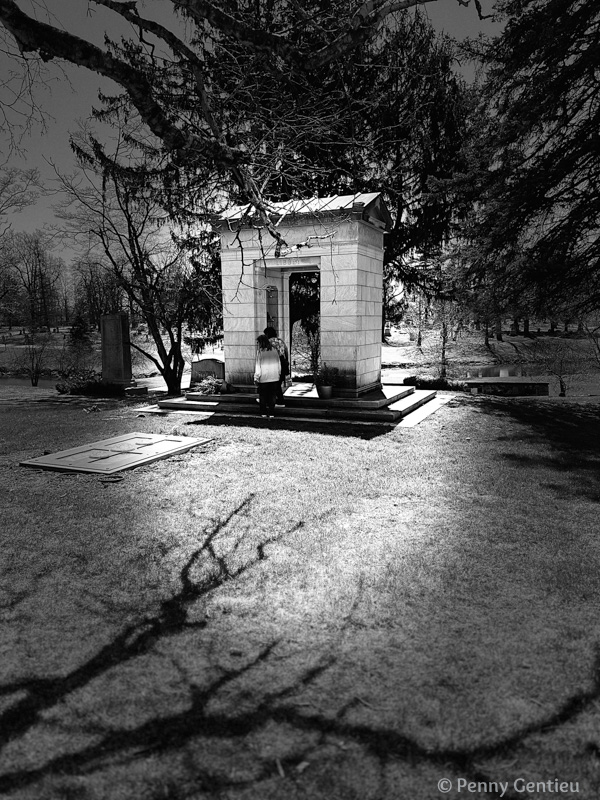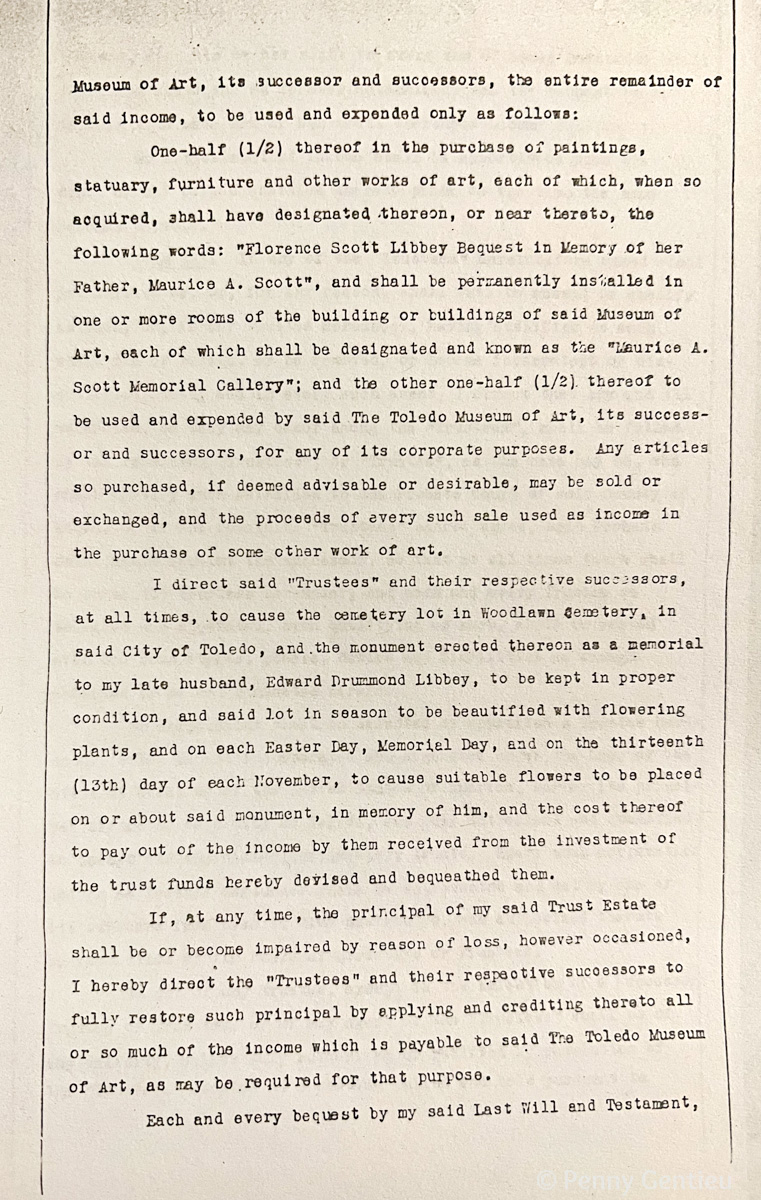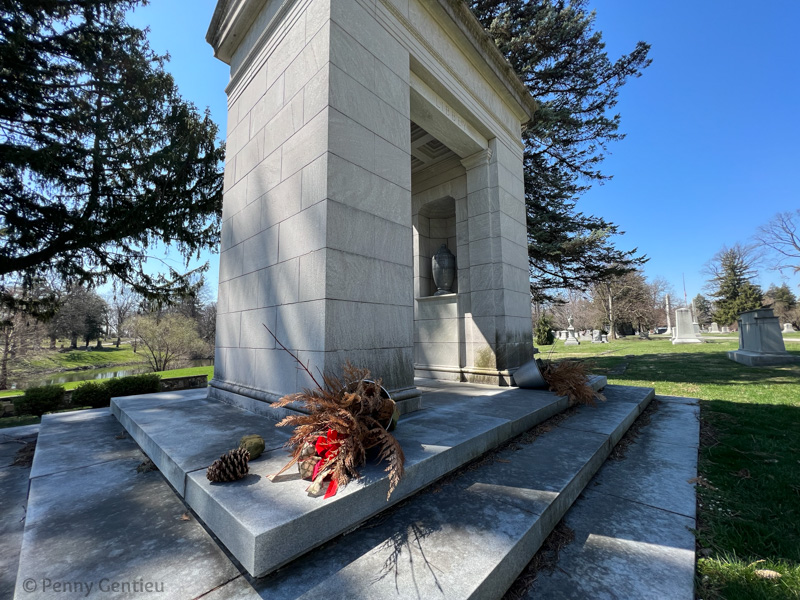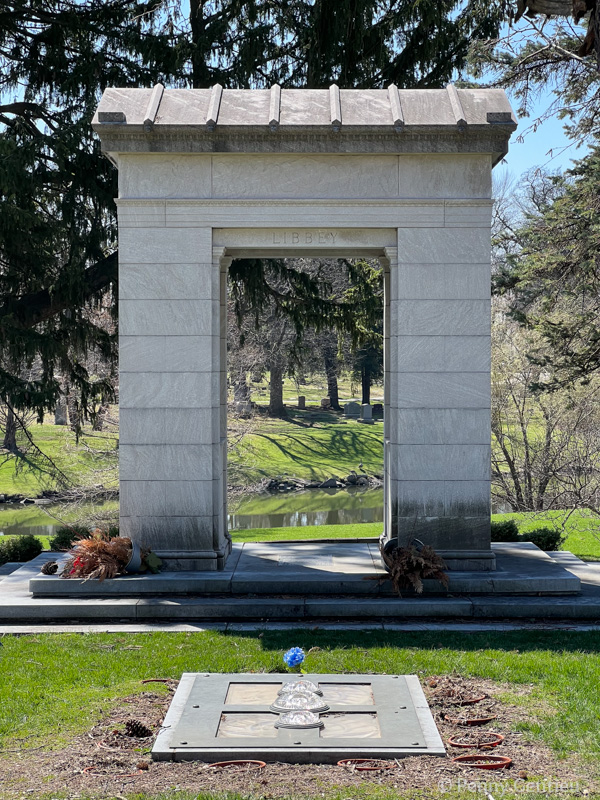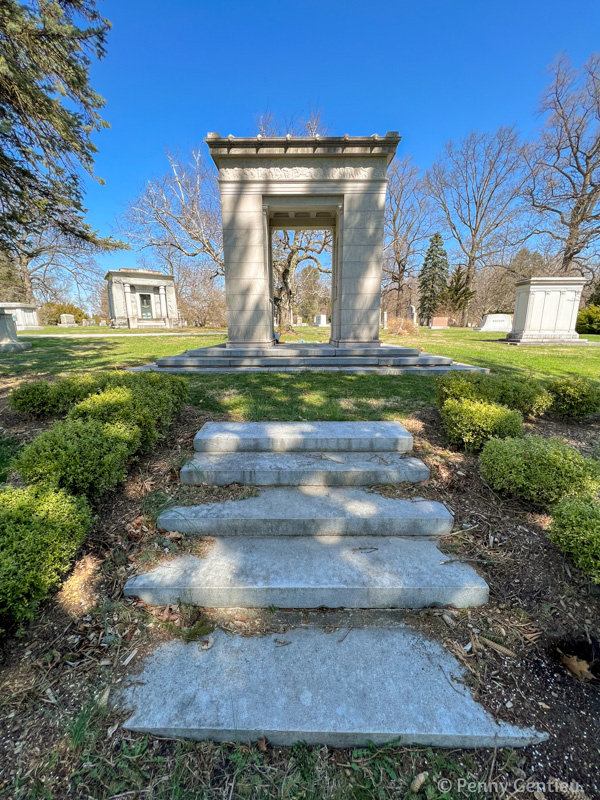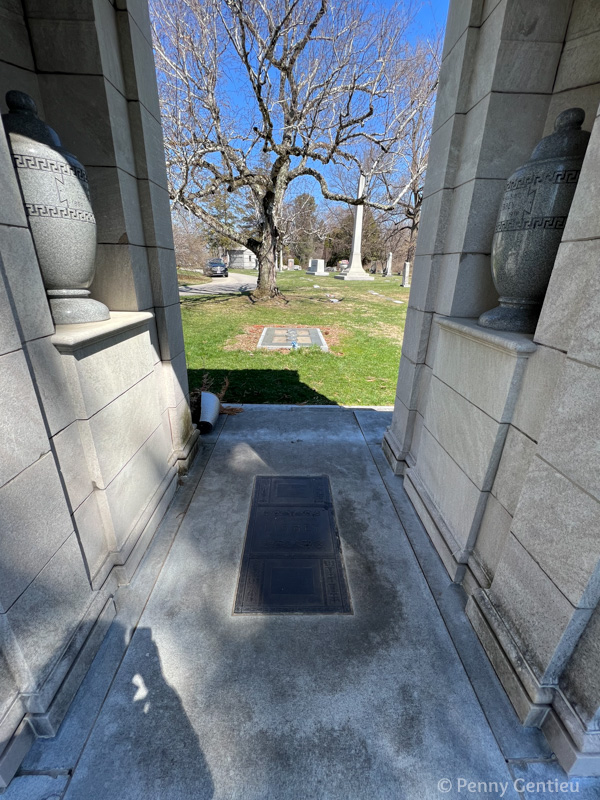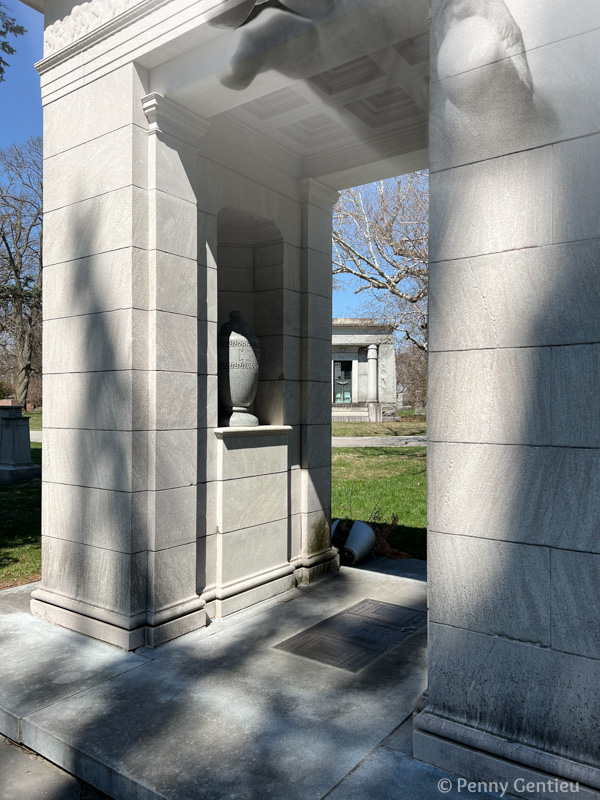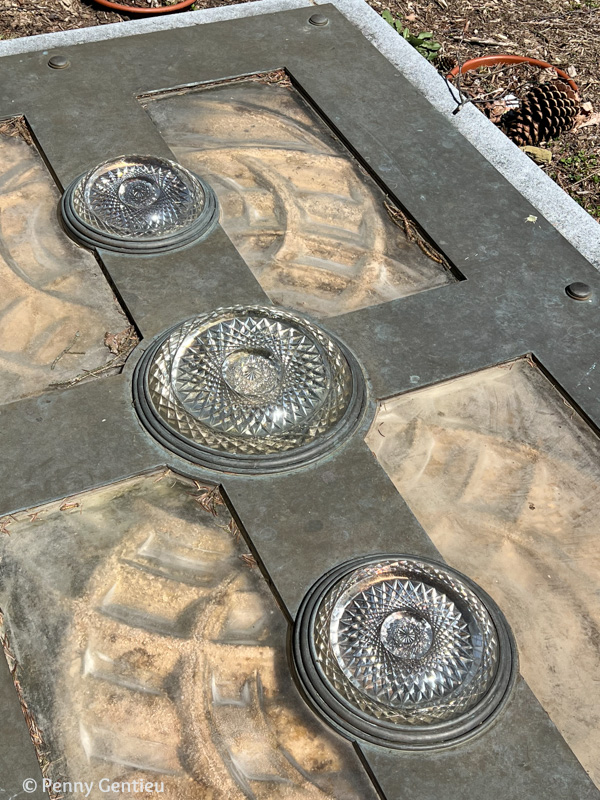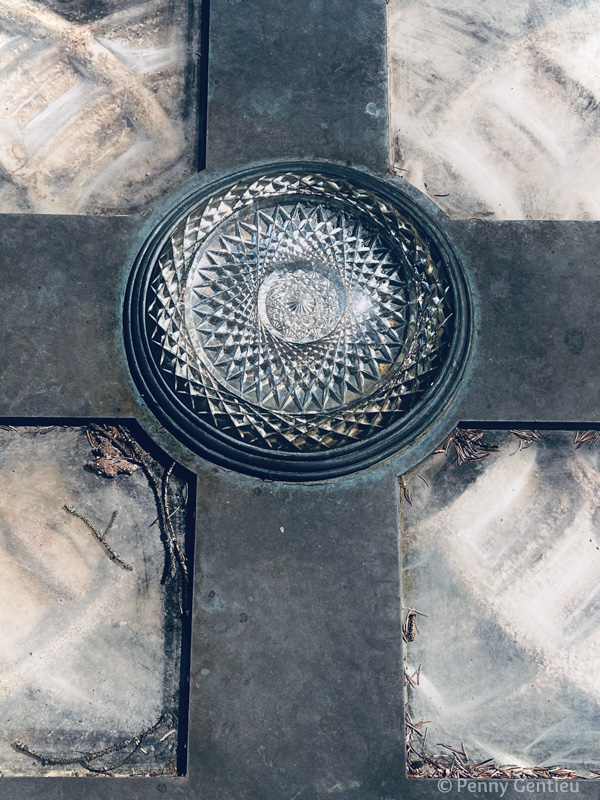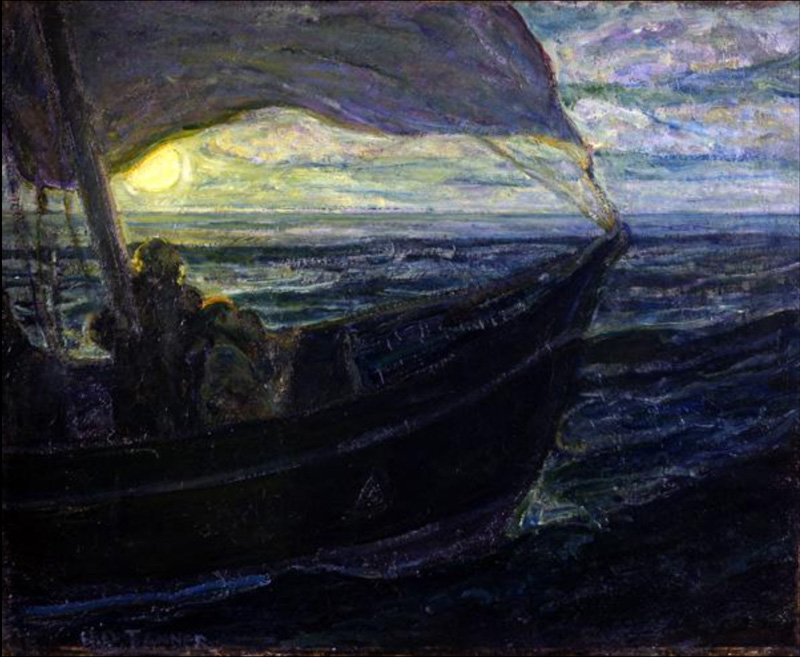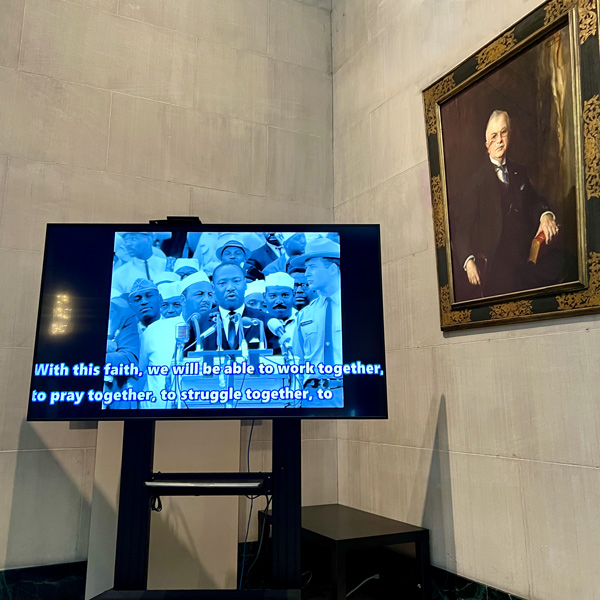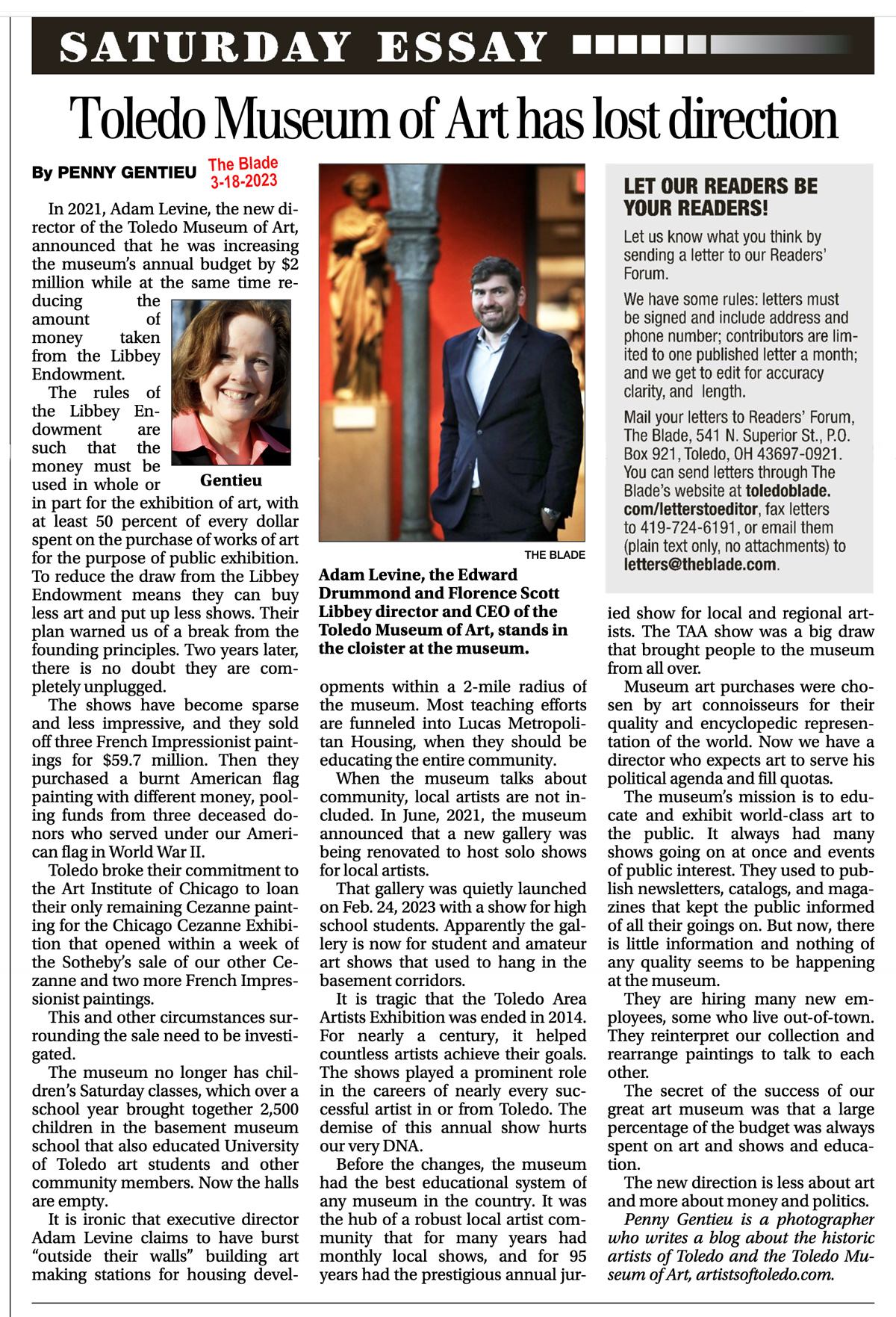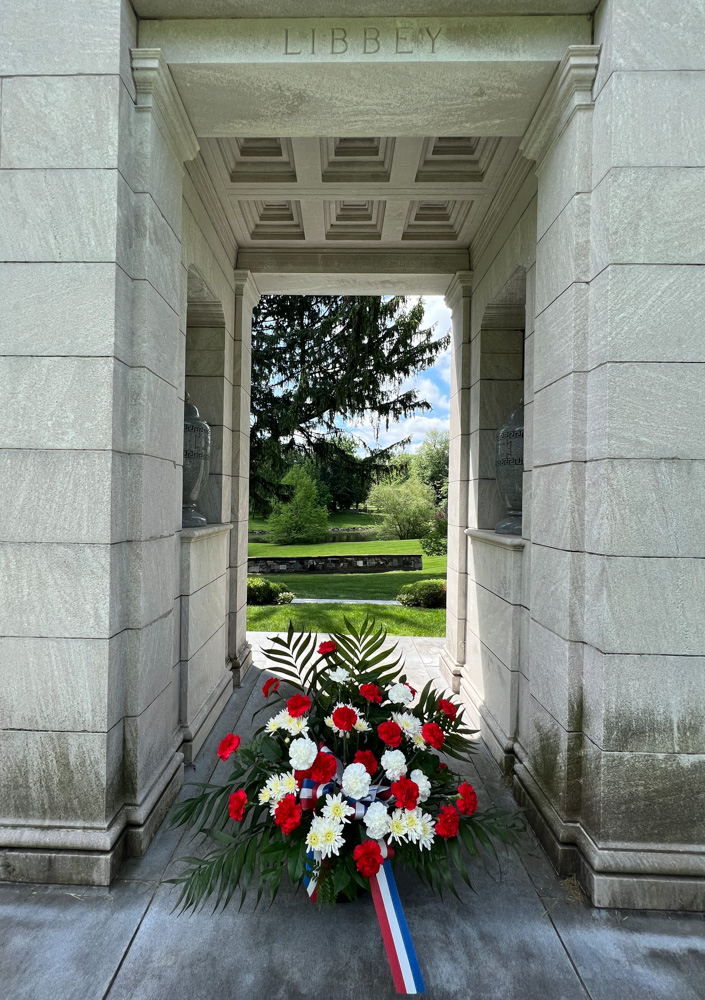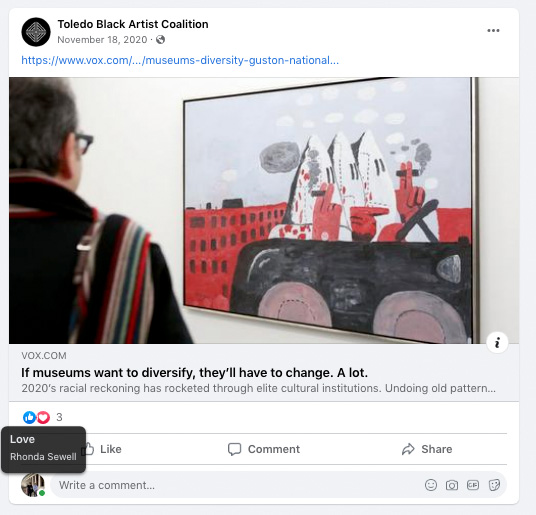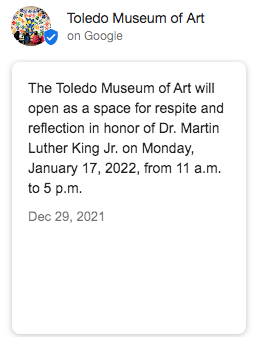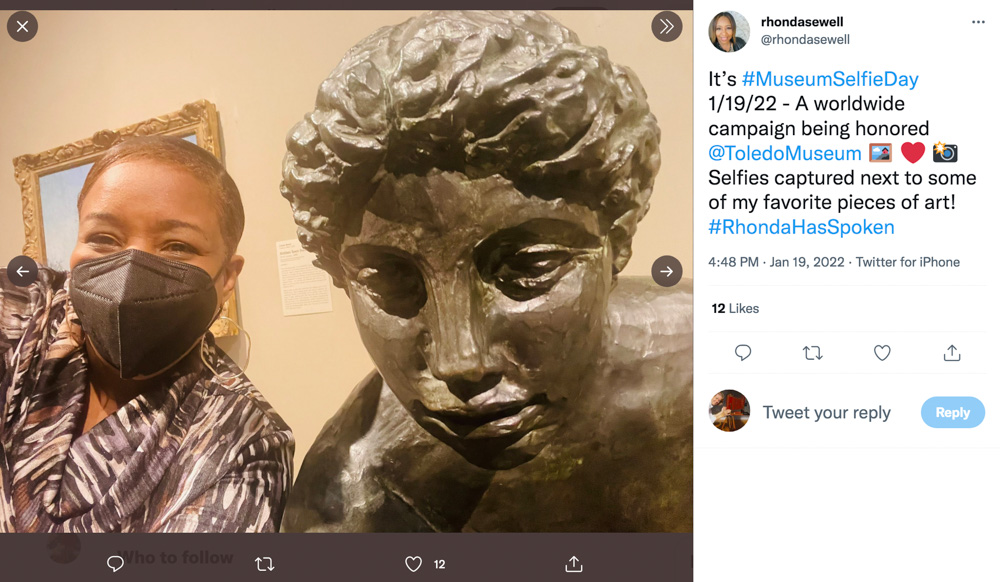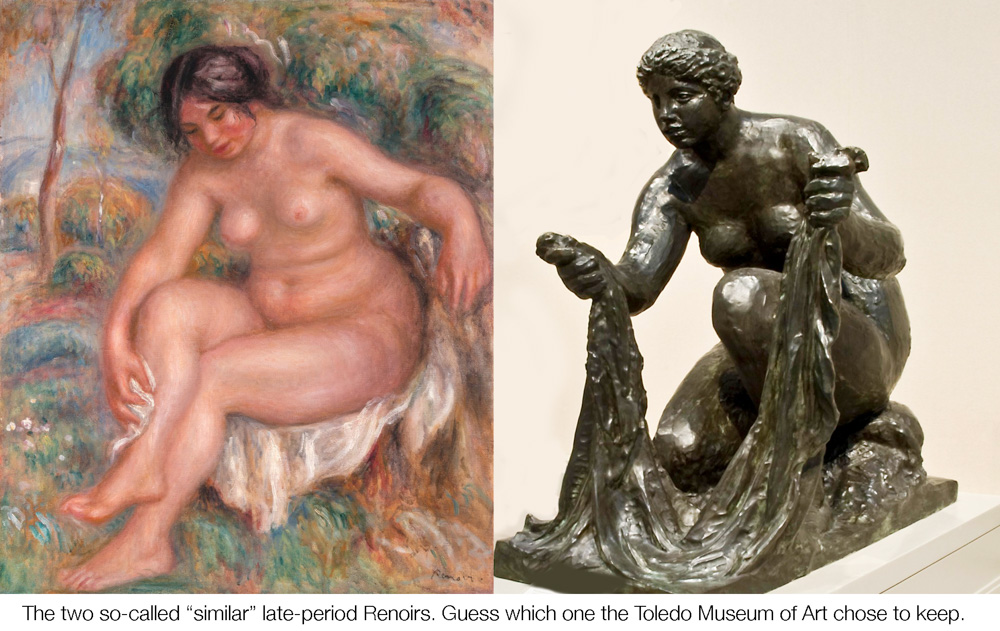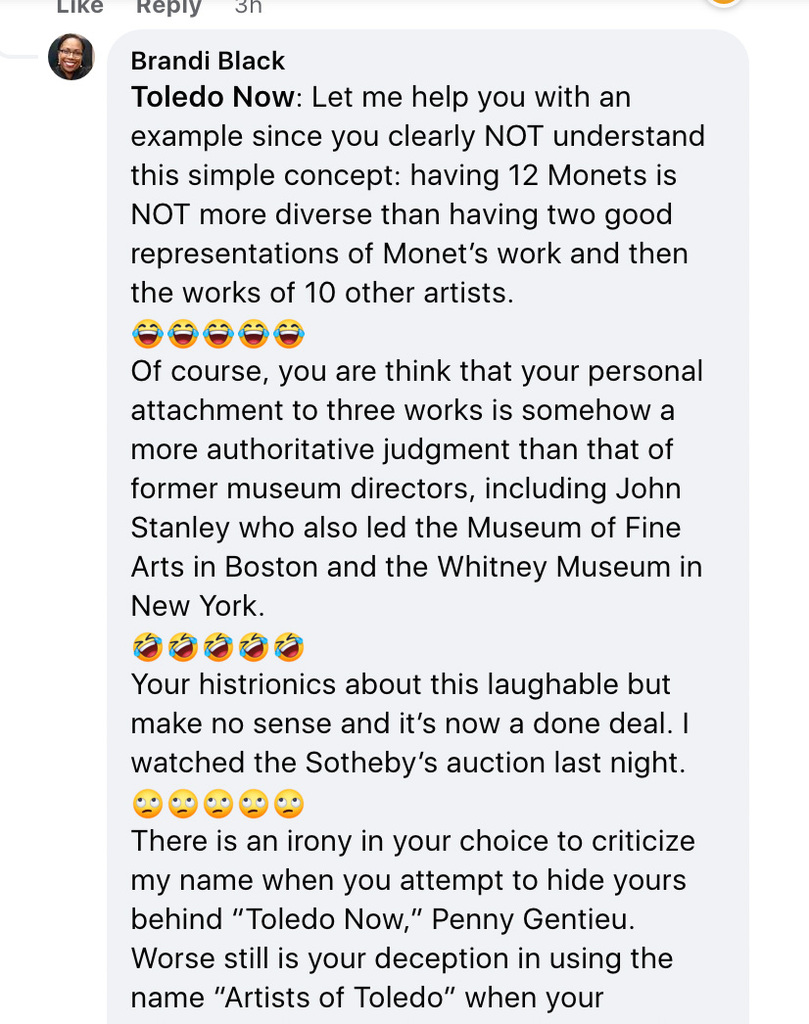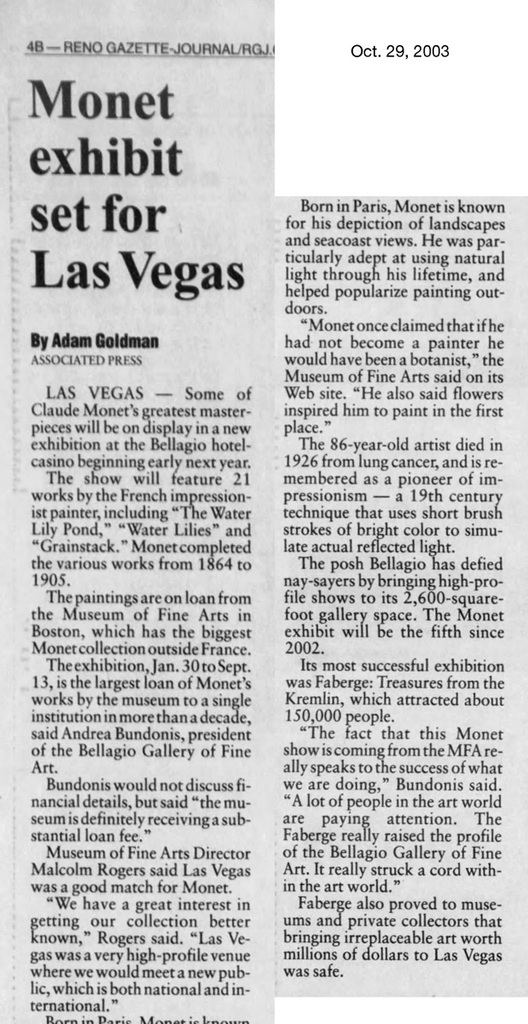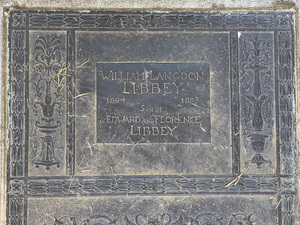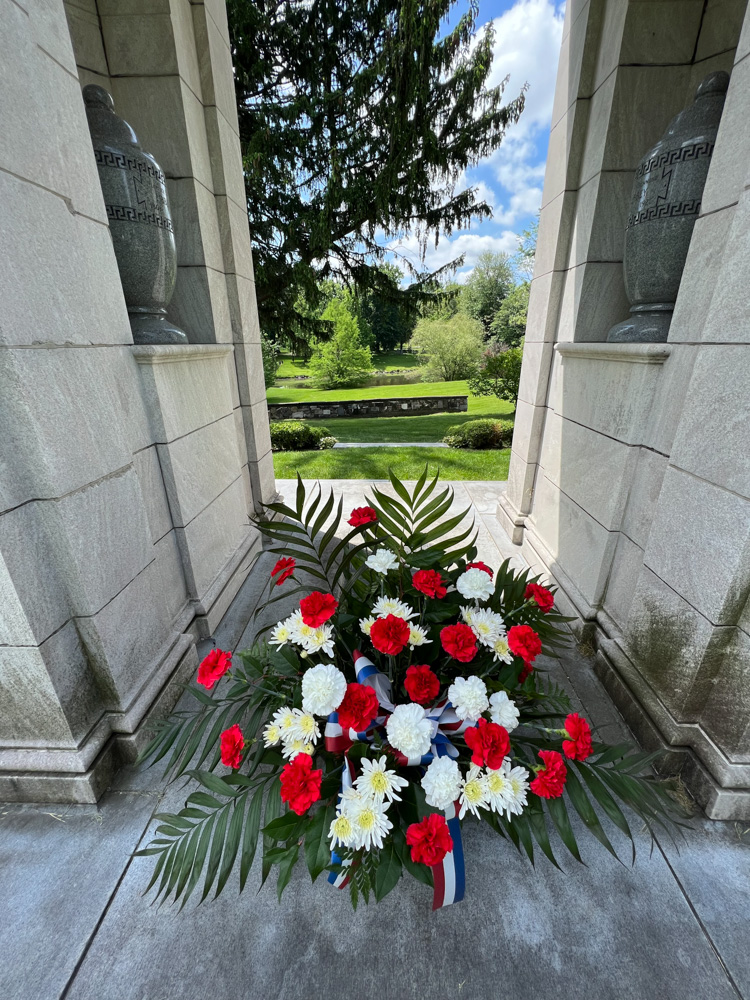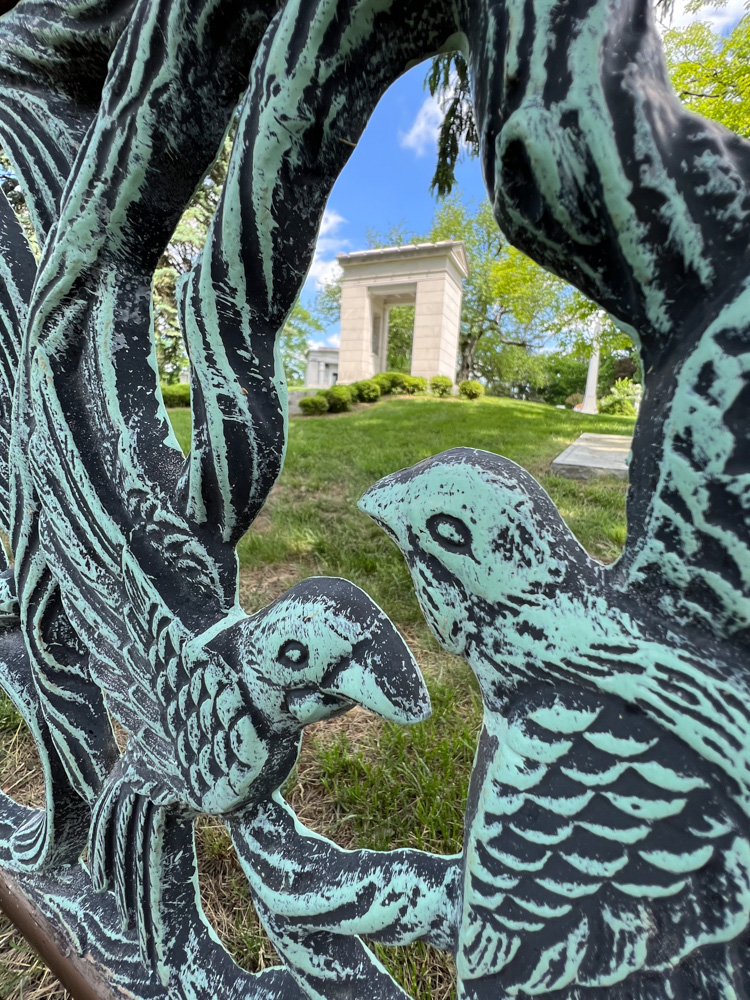The Toledo 2-Mile Radius Museum of Art
It’s Edward Drummond Libbey’s birthday today – he was born on April 17, 1854. Some people care – like the alumni of the high school named after Mr. Libbey that was torn down in 2012 and never replaced, and the runners of the “Florence Scott Libbey 419 Race” in honor of Edward Drummond Libbey’s wife. As for the Toledo Museum of Art, they stopped putting flowers on his grave, letting his memorial look terrible one week ago on Easter Sunday, a day that the museum is required to decorate the grave with flowers, as stipulated by the Florence Scott Libbey Endowment. (see my last post, No flowers for the Libbeys the year.)
Adam Levine’s recent guest editorial in The Blade
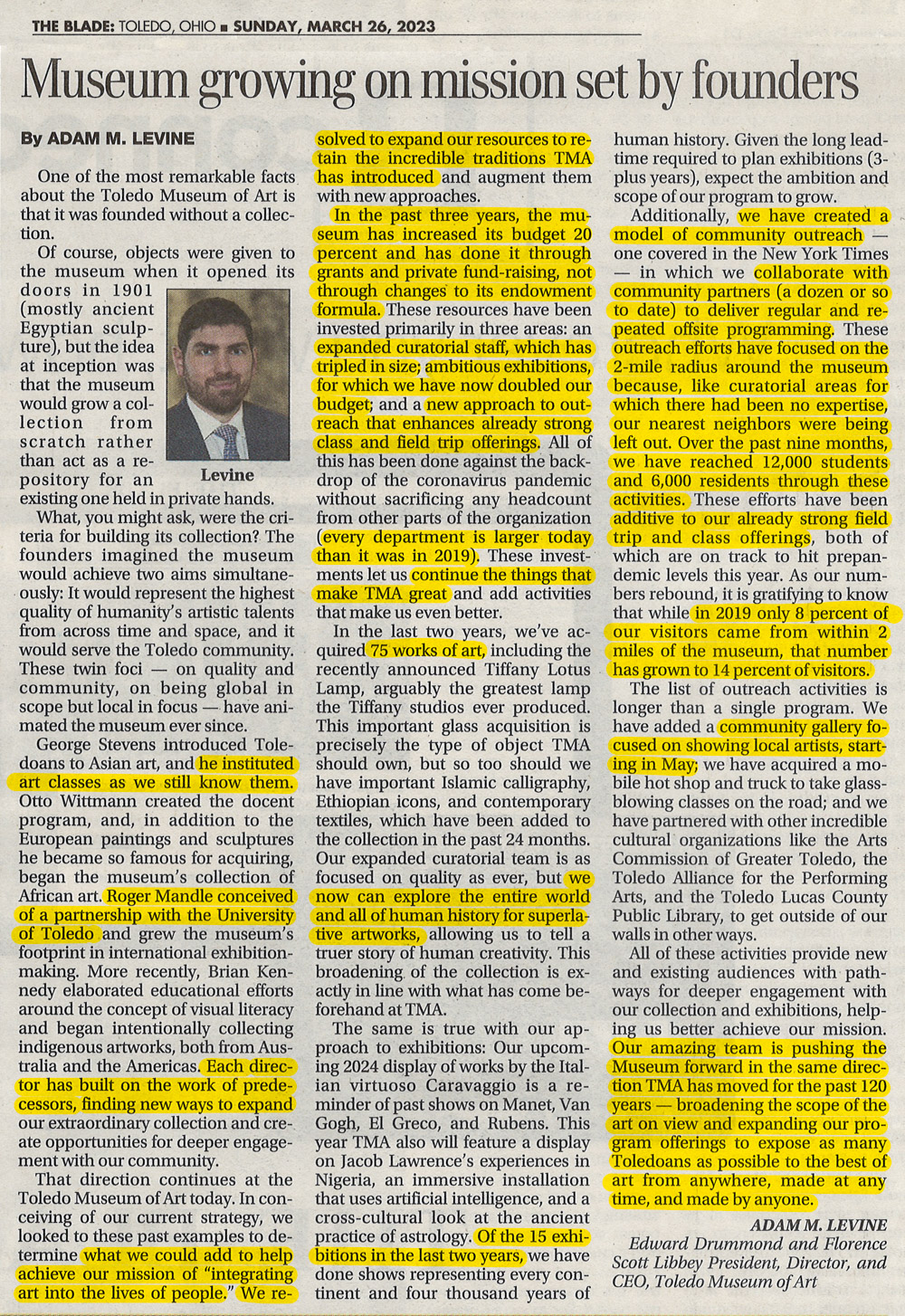
After my guest editorial in The Blade on March 18, where I showed that the museum is moving away from the wishes of the Libbeys, Adam Levine countered with his own editorial on March 26, “Museum growing on mission set by founders,” where he grasped to make connections with the founders – as if words, regardless of deeds, would make it so.
I found a lot of inconsistencies in his editorial. Here they are.
Comments on Adam Levine’s March 26, 2023 editorial

First of all, it was George Stevens’ wife, Nina Spalding Stevens, who instituted the art classes. At least give her that much credit. Nina and George ran the museum together. Yes, a woman was a partner in running our museum, way back in 1903. Imagine that.
Secondly, the adult classes back then in the beginning and through at least the 1970’s and 1980’s were quite extensive, nothing like we have now, and to say that they are “as we still know them” is just not true.
The museum let the richness of the adult art classes slip away when the university took over by hiring their own faculty in the 1990’s when moving to the new Gehry building that is attached to the museum. The adult population now has to pay a ridiculous tuition and unfair activity fees to take the university art classes. It’s a great disservice to the community. Over in the museum basement in the old school, there’s not much going on.

This is not true, I went to the University of Toledo, Toledo Museum of Art School of Design in the early 1970’s and my art classes were university credits.
My sister went to the University of Toledo, Toledo Museum of Art School of Design in the 1960’s and her art classes were university credits.
Many artists on this website had art classes at the museum that were applied to their University of Toledo BA degree, going back to the 1940’s, maybe earlier, such as Carroll Simms, LeMaxie Glover, Edith Franklin (who had her credits for her art classes in the 1940’s and 1950’s applied toward her degree in 1987, when she turned 65 and wanted to get her degree so she could teach. All she had to do was pay the extra amount to the university, as adults could take adult art classes at the museum in the past without being a university student, and it was cheaper. University students pay university tuition.)

Except that Adam Levine has shrunk it.
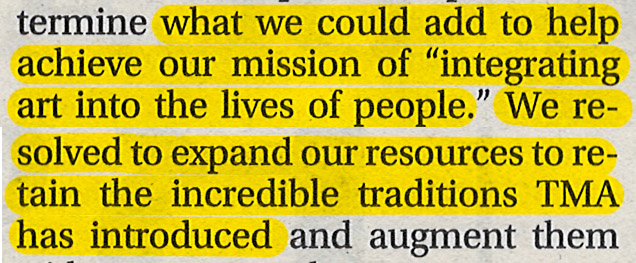
Again, Adam Levine invokes our great museum’s reach when he has actually shrunk the museum’s focus from a community of over a half a million down to a community of 18,000 people all within a small 2-mile radius, forsaking the larger community that is 36.111 times that in head count, from a number which reflects the museum’s local reach in their own words, noted in their 5-year strategic plan – “its 650,000-person metropolitan statistical area.” (see below)
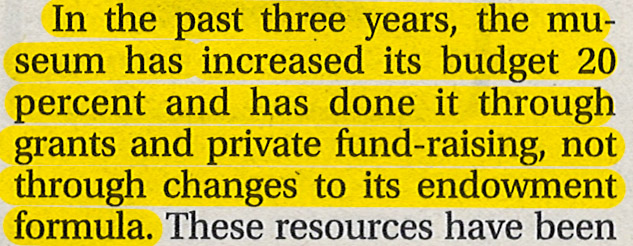
The Libbey Endowment Trust variance
In the summer of 2020, the museum filed a petition with the Lucas County Probate Court for a temporary variance on the Edward Drummond Libbey Endowment Trust to use less than the trust-stipulated 50% of the annual draw on the purchases of art, on account of the economic hardship of the pandemic. They were granted, for two years, ending July 1, 2022, the use of $150,000 per year to be taken from the art purchase fund to be used on “direct care costs of art” instead of on buying art. And I am guessing they did the same thing with the Florence Scott Libbey Endowment Trust, as well.
So it seems contradictory that the museum was able to increase their budget by 20% during the past three years – years that they were claiming hardship and diverting art-purchase funds. And during this time they also sold three of our famous paintings for $59 million, claiming to want to spend it on new art. All it’s been spent on so far is a new financial vehicle that’s making money for financial people.
5-year plan said so
Also, this contradicts the statement in The Blade on March 9, 2021, reporting that the 5-year plan calls for decreasing the percentage the museum draws annually from the Libbey endowment —
The plan calls for financial changes that include increasing the budget from about $18 million to $20 million, and decreasing the percentage the museum draws annually from an endowment that founder Edward Drummond Libbey established for the museum upon his death in 1925.
over budget already, and it’s only been 2 years
Also, the increase in the budget two years ago was about 12%, but now he is saying the budget has increased by 20% — 8% more than the 5-year plan called for.
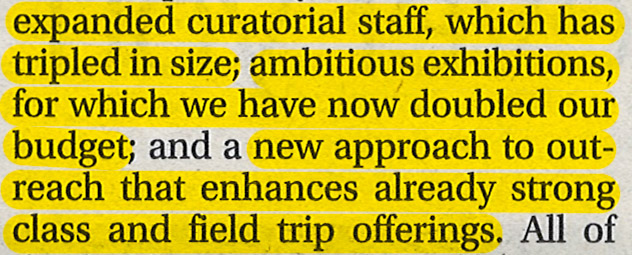
the remote control of the museum
Why do we have curators who live outside of Toledo? Adam Levine hired a consulting curator, Lenisa Kitchiner, for the museum’s African collection. Although the museum doesn’t mention it in their press release, she is the Chief of the African and Middle Eastern Division at the Library of Congress in Washington, D.C., with an educational background in literature, African studies and politics, not art history.
Why did the museum hire a curator of ancient art, Carlos Picon, the director of the Colnaghi art gallery in New York, who is an ancient art dealer? Isn’t that a conflict of interest?
What is going on that the Toledo Museum of Art is hiring people from out of town who do not live in Toledo, or even in Ohio, to run our museum remotely?
Why “rebrand” the museum?
Adam Levine started a brand-new department, Brand Strategy, to redefine our museum, hiring Gary Gonya, who lives in Colorado, as the director of the department. First, Adam Levine painted our museum as being somehow elitist if not downright white supremacist, (see, Blade article, June 2021) when it had always been a progressive, democratic museum for all of the people.
“Art museums…Elite. Erudite…but for many, the word ‘inaccessible’ must also be included on that list.”
“…their auras of excellence can deter the average citizen from feeling they are places to frequent, enjoy, and learn from without having a gold-embossed degree in one’s back pocket.”
“the art museum really is looked at as a place for the people on the river…”
“Mayor Kapszukiewicz said there historically has been a sense that the art museum was a place for the Florence Libbeys of the world. Mrs. Libbey was a patron of art married to Edward Drummond Libbey, the owner of Libbey Glass Co. and the art museum’s president from 1901–1925.”
Then Gary Gonya came in and said, “We will develop an inclusive brand voice and experience that inspires all people and awakens their connection to the deep human story we all share.” Art Matters, Winter/Spring 2022
Now Adam Levine harks back to the museum’s founders, claiming ownership of the museum’s progressive, democratic history.
It’s as if what they have done by discriminating against most of the people in the Toledo metropolitan area in favor of people who live in a small geographic area, and by selling our best paintings, isn’t actually a big break from the founding principles instead.
A new Communications Manager, a department which is now overseen by Brand Strategy, was hired at the museum who was living in Lansing Michigan. She appeared on TV saying that Toledoans want to see themselves on the walls. She wrote and edited a belated quarterly Art Matters Magazine in September 2022, and then after just a few months of museum employment, she left. There has not been another Art Matters Magazine since then.

TMA was greater when the budget was half as much
Even though they have added the Branding Department, a Chief People Officer and a Director of Belonging and Community Engagement and fully staffed these new departments, and even though they spend $3.6 million more this year than they did three years ago, the museum has not managed to continue the things that has made it great.
The School of Design made the museum great. The great Saturday Children’s Class program that was coordinated with the Board of Eduction to provide about 2,500 public school children (parochial school children too) with an extensive, full-school-year program of art classes is what made the museum great. Free at first, then nearly free.
The adult art class culture and community that the museum used to have made the museum great.
The annual Toledo Area Artists Exhibition that brought together the region’s art community, that celebrated their creativity and made everyone feel part of it and welcome made the museum great.
Selling our valuable and historic art
It is so ironic that while expanding budgets and commandeering endowment fund art allocations for other uses, that Adam Levine took away perhaps the most important thing that made our museum great.
Adam Levine sold three of our world-class famous historical French Impressionist paintings that we had in our collection for a very long time. These paintings were a substantial part of the museum’s small but strong collection of French Impressionism. These paintings meant so much to our community, and people came from near and far to see them. They were very accessible. Cezanne is considered the father of modern painting.
The museum’s great art made our museum great.
Invoking Libbey to pass off a lie
Adam Levine took our Cezanne, The Glade, right off the wall and sold it for $41.7 million. He lied to us about the reason why he was doing that, saying that the painting was mediocre and Libbey would have wanted us to get rid of it, and that the museum never meant to have two examples of any one artist.
He embarrassed us to world by promising our other Cezanne to the Art Institute of Chicago’s Cezanne Exhibition taking place concurrently, which is documented full page in the show’s catalog as being in the show. Instead he sold our other Cezanne, The Glade, right off the wall, just two days after the opening of the important Cezanne Exhibition at the Art Institute of Chicago.

Just wondering why the art acquisition numbers indicate that a lot more art was bought during that time? I saw a work with the number 2022.92. That would indicate it was the 92nd work bought in 2022. And he states here that they acquired only 75 works over 2 years. Did they buy and sell works to flip them, perhaps? Funny thought but with all the weirdness going on at the museum, I wouldn’t put it past them.

TMA has never not explored world art
The Toledo Museum of Art has always explored art of the entire world, it doesn’t need to raise budgets and hire more employees to do so. What the museum needs are art curators who are connoisseurs, not statistical survey satisfiers.

Unimpressive shows and few of them
I counted only five shows in 2022, and they were unimpressive. Two shows in the past two years were showing the restoration of artwork. The second show like this, in the fall of 2022, was used as a fundraiser to raise money for the restoration of certain pieces, which is funny because the restoration of art is what the Libbey variance of 2020 was about (“direct care of art”) – the museum received extra money for this use, yet there they are trying to get the public to pay for the restoration of the glass dress that represents the Libbeys themselves. The variance diverting Libbey’s money for the restoration of art was not even used to care for Libbey’s deeply important and meaningful legacy.
The shape of things to come
The coming show about extinct birds, Alexandra Daisy Ginsberg – Machine Auguries: Toledo is running an extra-long time for a show at a museum that claims to be working on bringing in repeat visitors – seven long months – from April 29 to Nov. 26. The show is not sponsored by the Libbey Endowment Fund. Instead, it’s sponsored by 8 different sponsors, including corporations, donors, foundations and the Ohio Arts Council: “Presenting sponsors Susan and Tom Palmer, Season sponsor ProMedica, Platinum sponsors Taylor Cadillac, the Rita B. Kern Foundation, and The Trumbull Family and Silver sponsor Dana Charitable Foundation. Additional support provided by the Ohio Arts Council and the Boeschenstein Family Foundation.” All those corporate sponsors, and still, the museum is charging $10 for non-members to see it.
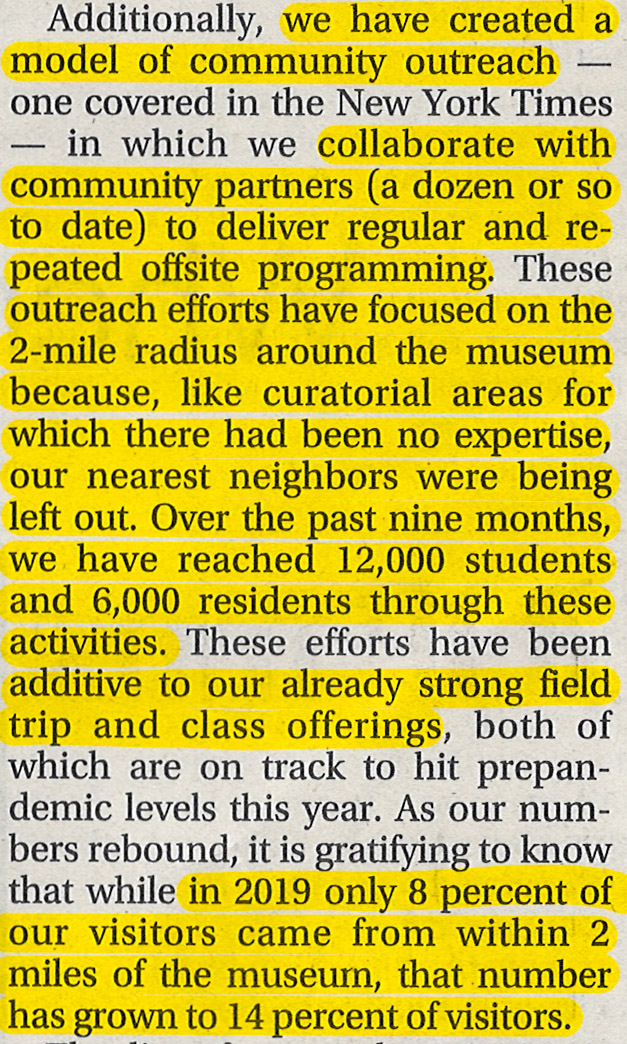
Nearest neighbors being left out? a big lie
First of all, the museum is free and the doors are open. We can thank Edward Drummond Libbey and Florence Scott Libbey for that. The museum has always welcomed everyone, since Day 1.
The museum’s 2021 5-year strategic plan puts TMA’s reach at 650,000 people for the Toledo Metropolitan area. Over the decade, they report having about 380,000 visitors per year.
The 2-mile radius is 12.57 square miles and the Toledo Metropolitan area is 240 square miles. So therefore, the 2-mile radius of the museum is only 5.24% of the museum’s Toledo Metropolitan area. 8% of the museum’s attendance from the 2-mile radius neighborhood is a lot more than 5.24%, and 14% is way more. So how have the “nearest neighbors” been left out?
“An active approach to community outreach not only increases the level of offsite programming, but in so doing, it allows TMA employees to create personal relationships and invite program participants individually to visit the Museum,” the plan reads. The Blade, March 9, 2021, Museum outlines 5-year plan of growth
All this effort the museum has recently made to hire more people (raising the museum’s budget by $3.6 million with public and private grants) to befriend and make personal relationships with a select area of their total reach, and to hand-hold these neighborhood people to get more to come to the museum, and to pass out free memberships (good for free parking and special shows) at the expense of all other visitors who are not members to which they raised the parking fee by 45%, has made the statistics grow to 14% for the visitors being from the 2-mile radius – a large percentage compared to the overall population of the museum’s reach – but are they accounting for less people coming from other areas? Is reducing the attendance of the other areas part of the plan too? Because they are absolutely leaving everyone else out.
A siphon and a funnel
It’s like a siphon of most of the former efforts the museum made for the entire community being funneled into one place – the 2-mile radius.
Closing museum on a Friday to dismantle the Great Gallery for a private party for themselves and the 2-mile radius
The museum was closed on a Friday in October 2021 to put on a private concert with John Legend that was supposedly for the kids in their outreach program but ended up being a private party for adults. Using the Great Gallery, where most of the Old Master paintings are displayed including the Peter Paul Rubens, they removed the paintings from the gallery walls, risking damage to the museum’s most valuable collection, and replaced them with contemporary paintings by black artists. Information was initially released that it would be for the neighborhood kids they are doing outreach for. However, it was reported in the Sojourners Truth newspaper after the concert that only 40 children attended, who came from the seven different “communities” within the 2-mile radius of the museum. Along with 400 adults who had a party for themselves. Printing a full-page photo of their private concert in the 2021 annual report, the museum asserted that the museum would be doing more private functions like this in the future.
Not very Libbey-like
Why would the museum close its doors to the public on a busy day to have a private party with the neighborhood? Why does the museum feel that the people from the neighborhood can’t relate to the great collection that the museum presently has? Isn’t that a supreme insult to people of the neighborhood? Or is it all just a smokescreen to sell off our great paintings?
Art-making experiences for seniors in the 2-mile radius only
siphoning $9,998 per art-making session
The Toledo Museum of Art just received a grant to give art lessons/art experiences to senior citizens in senior centers. See story in M-Living here: Toledo museum program takes art to older adults
The grant, for $119,916, from Michelson Philanthropy, “a pioneer in creative aging,” will be used to give a 6-session art program at two senior centers serving seniors in the special “2-mile radius” this summer, summer of 2023. That works out to be $9,993 for each art-making session.
There are many seniors all over the city of Toledo, many of them who have never been to the Toledo Museum of Art as well, and to isolate a small section of Toledo to pour $119,916 into 2 senior centers for just 12 art making sessions this summer is divisive, strange, and unbelievable. Toledo has 14 or so Senior Centers, and most of them are out of luck. Many people in their communities are feeling unwanted, isolated, lonely, poor and miserable. Survivors of the pandemic, but for what. To emerge into a world that literally doesn’t want them anymore.
we made you but now we decided to eliminate you
The museum made note in their 5-year strategic plan that they have way too many older educated white women. They don’t like us anymore, so I guess we have to sit the rest of our lifetime out.
How could the museum have known, when we were little children, educated at the museum’s Saturday classes and also having college classes at the Toledo Museum of Art School of Design, that we would stay so interested in art when we would grow up – that we would enjoy going to the museum so much that it would make the Twenty-first Century museum director’s socio-economic and racially profiled and ageist statistics explode his mind? There are some people that don’t fit in to their new branding – also called, discrimination.
Adam Levine’s solution is to cut us out, just like he got rid of the French Impressionist paintings that skewed their art collection so male and so white.
Over the past decade the Museum has received, on average, 380,000 visits per year, which as a percentage of its 650,000-person metropolitan statistical area ranks it among the top five most visited art museums per capita, according to annual statistics from the Association of Art Museum Directors.
Though TMA can claim a history of executing on quality and community, this Museum, like so many others, has implemented its strategies in ways that have not been equally inclusive or equally accessible. Though TMA is known across the world for its outstanding collection, that collection reflects a Eurocentric view of the world. Likewise, the demographic attributes of those 380,000 annual visitors skew Caucasian, female, older, affluent, and highly educated. – TMA Strategic Plan 2021
Exactly WHAT strategies have not been inclusive or accessible? Our museum is NOT “like so many others.” Our museum has been collecting diverse art from the very beginning. For example the Henry Ossawa Tanner painting purchased in 1913, for just one example.
Nothing has ever stopped the museum from making diverse purchases. They have been buying quite a lot of non-European-type-non-white-male art for the past several decades. in fact, I made a survey of art acquired by the museum from 2017 to 2022, and it lines up pretty closely to U.S. Census statistics of nationality and race. See my survey here: The Artists of Toledo Report.
Are they going for full collection-wide parity? Are they not going to collect art by white men altogether?
Money and politics
Could it be that they are using the outreach program to politically organize the 2-mile area, using the neighborhood as a pet anthropological experiment?
Will their radicalism in our meek Midwest town that lets them do anything win them the fame they so desperately seek?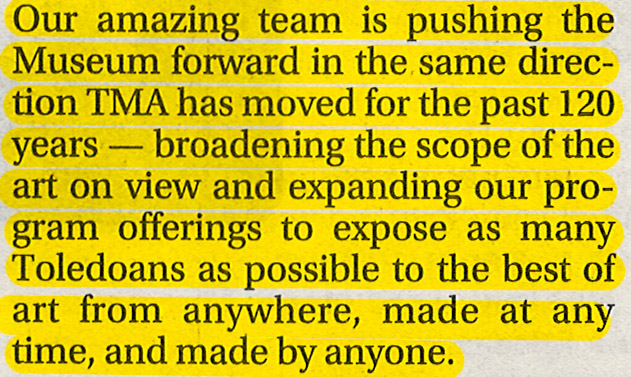
expanding? or pushing us over the edge?
The museum is leaving everyone else out. The museum has always been about art, but now it seems they have traded art for money and politics. Lots of grant money for the taking. They are doing focused outreach in this 2-mile radius area, which is what the Arts Commission had always done in the past.
The museum should be a museum. Let the arts commission be the arts commission.
Adam Levine is the steward of our museum, it is not his to remake.
People come to the museum. It has art. It has education. It has a beautiful marble pillared building. It is a place for personal contemplation. It is not a place to be bullied. It is not a place to be beaten over the head with politics.
People who run the museum first and foremost must care for the art for future generations. They shouldn’t be selling it off. They shouldn’t be trying to make themselves famous at the expense of Toledoans. It’s ridiculous that they claim to want to remake our museum to set an example for all other museums to follow. As if to let them recreate our museum for the sake of their own notoriety among other museums would make us proud. Our museum was a great example for other museums from the beginning, but it never set out to make fame its priority. The art and the people of Toledo were always the museum’s priority, and should be now.
Our museum always used to welcome everyone and was fair to everyone. Our museum served everyone. Our museum never had to do surveys on the race or gender or income level of their visitors. Our museum never discriminated against people based on their zip code, but they love doing that now.
What George Stevens said in 1903
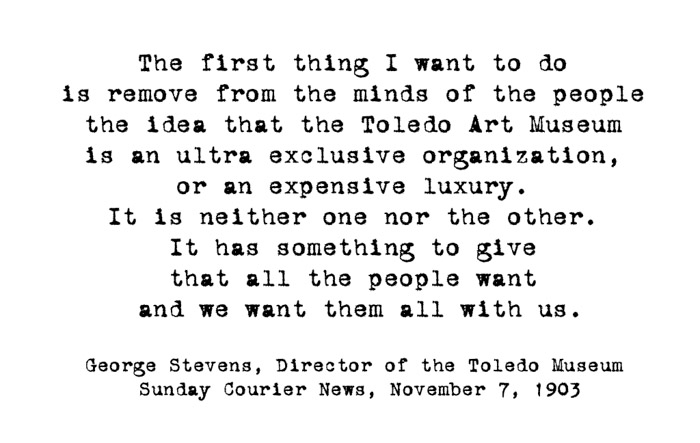
What would our founders think?
What do you think?
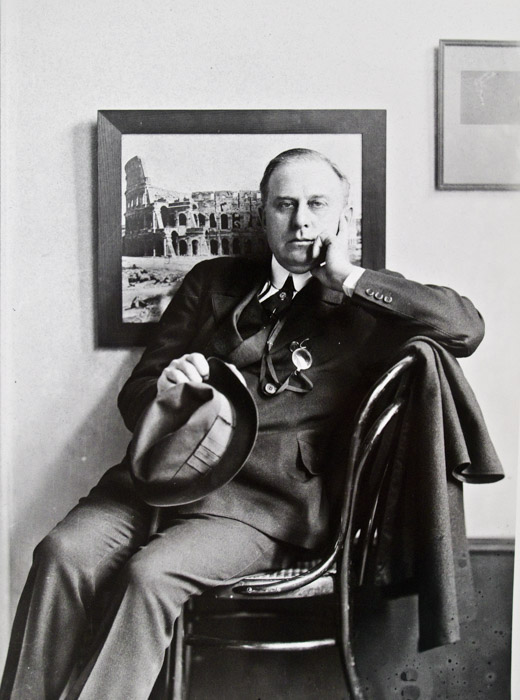
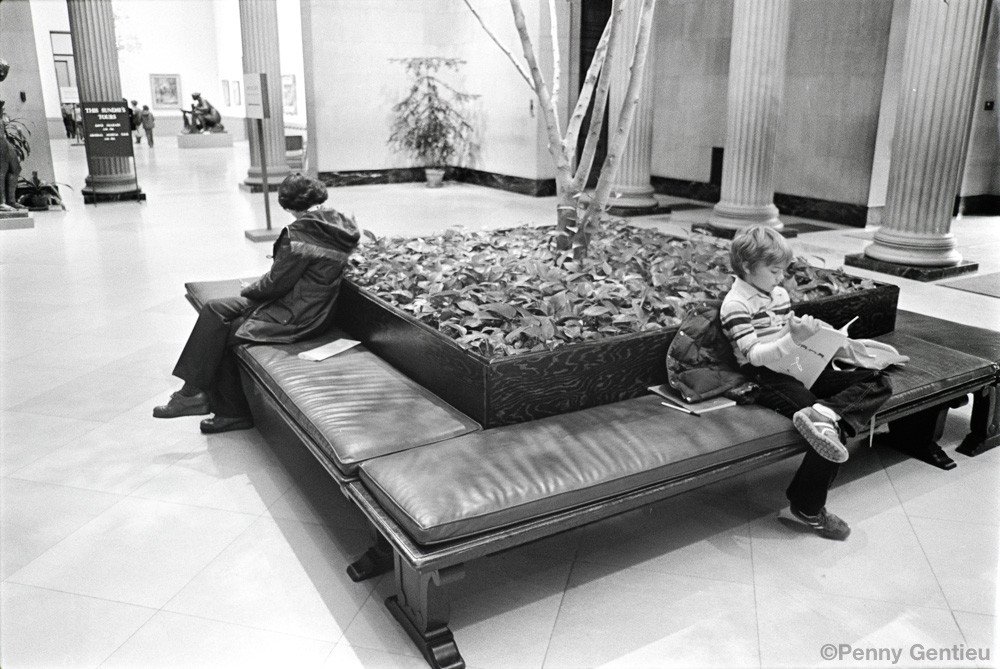
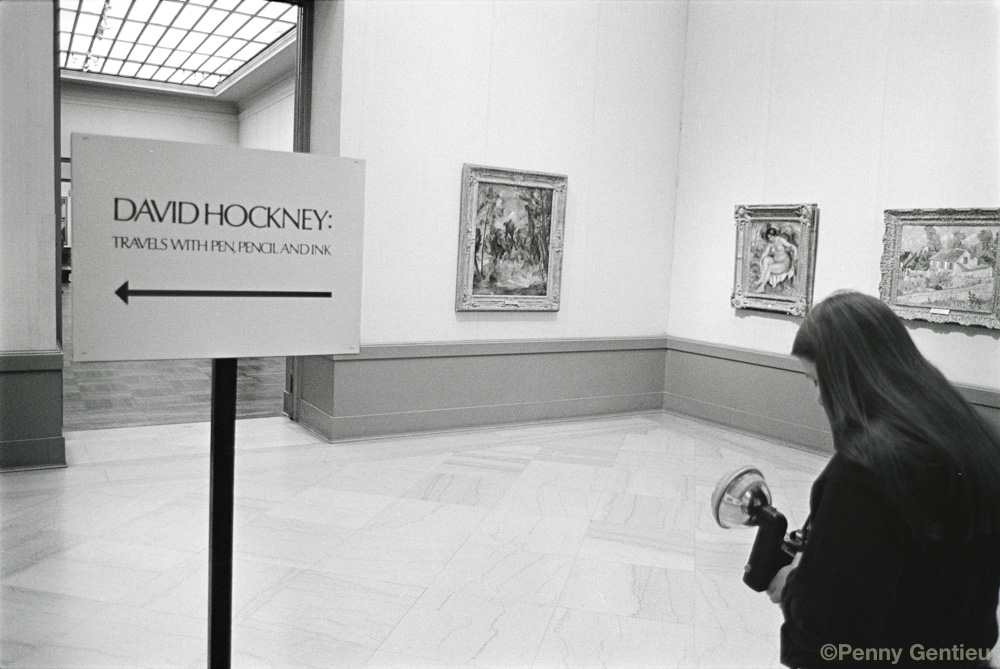
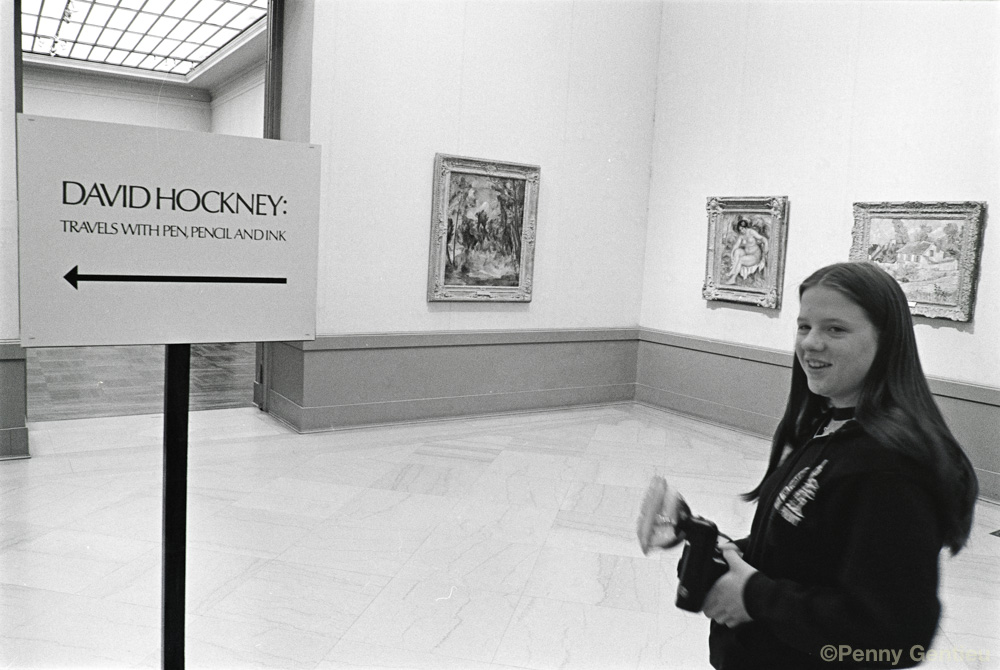
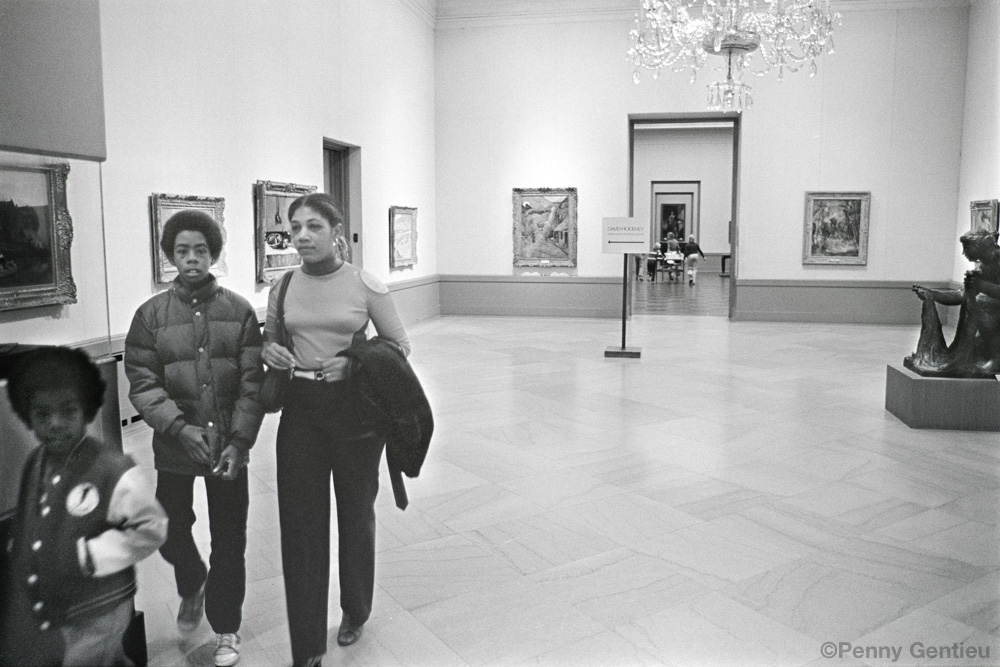
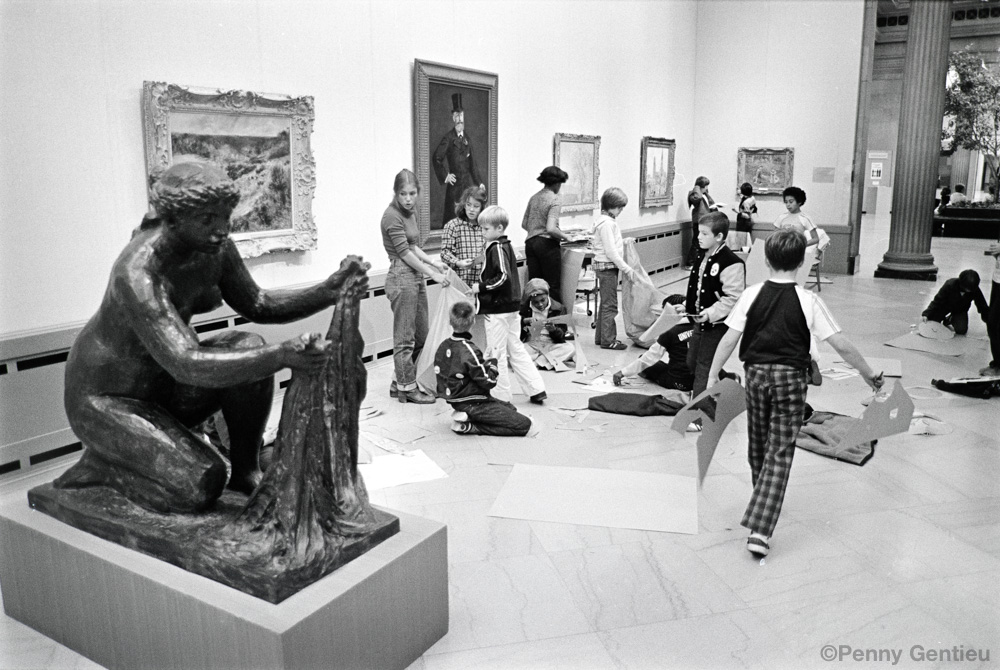
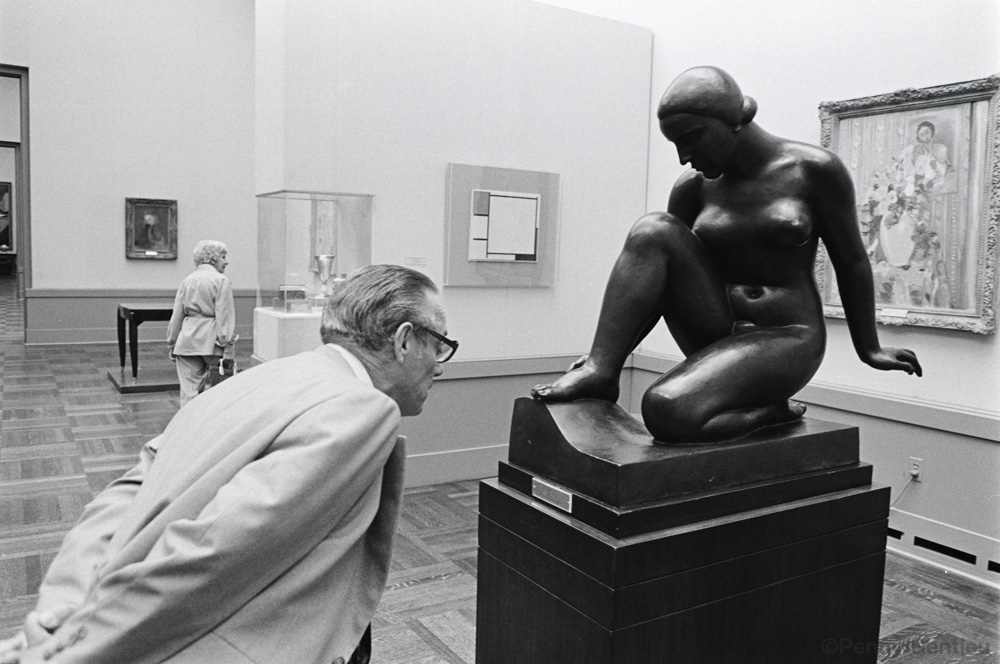 After leaving the first gallery, where the Cezanne and Renoir paintings were shown prominently, a visitor would enter the next gallery, where one of the first paintings in the gallery hanging on the right would be Henri Matisse’s Fleurs ou Fleurs devant un portrait that Adam Levine also sold. Here, a visitor examines a sculpture by Aristide Maillol (1861-1944), Le Monument à Debussy, (in conversation with the Renoir sculpture in the first gallery) with the Matisse painting hanging in the background.
After leaving the first gallery, where the Cezanne and Renoir paintings were shown prominently, a visitor would enter the next gallery, where one of the first paintings in the gallery hanging on the right would be Henri Matisse’s Fleurs ou Fleurs devant un portrait that Adam Levine also sold. Here, a visitor examines a sculpture by Aristide Maillol (1861-1944), Le Monument à Debussy, (in conversation with the Renoir sculpture in the first gallery) with the Matisse painting hanging in the background.